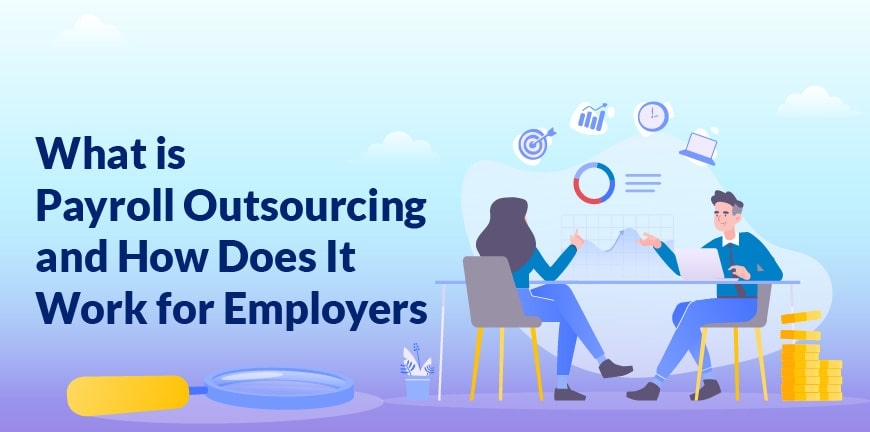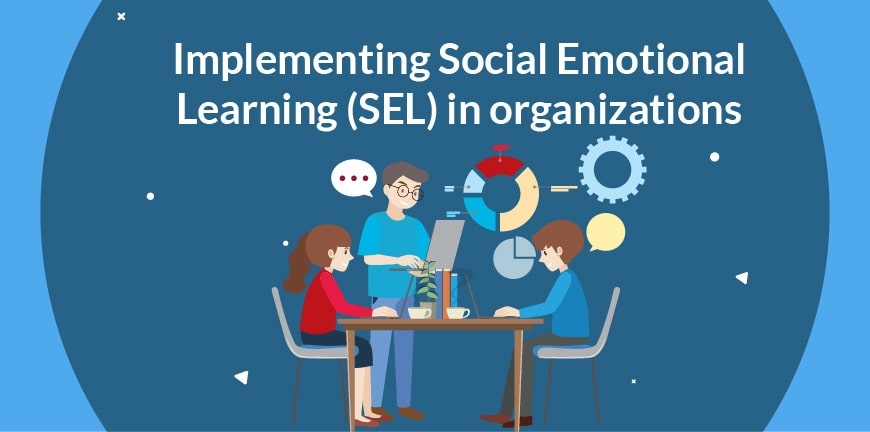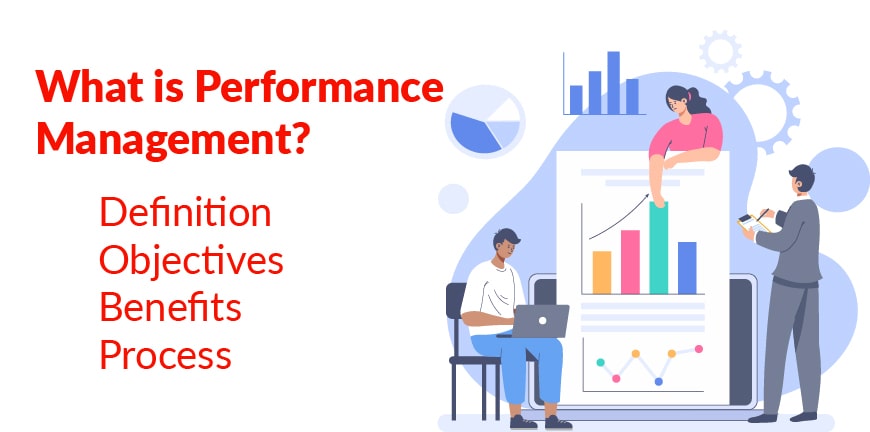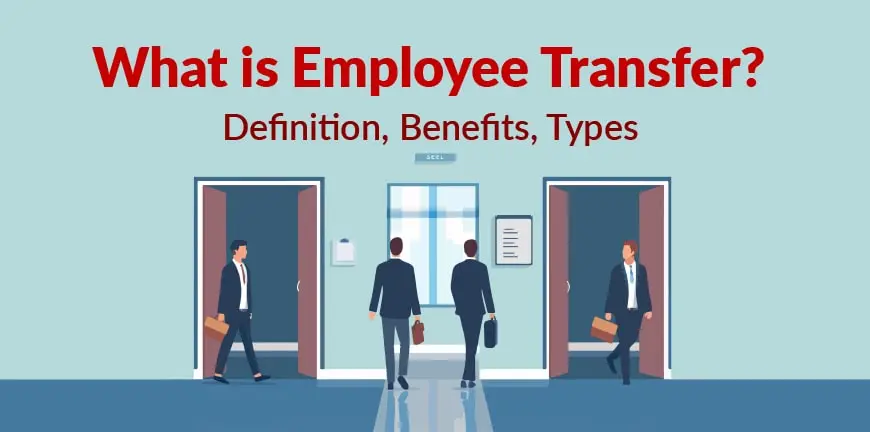
Retained Executive Search Vs. Contingency Recruitment: What’s the Difference?
07/08/2023
What is Payroll Outsourcing and How Does It Work for Employers?
08/08/2023- What is social and emotional learning?
- Social and Emotional Learning at the Workplace
- What are the Benefits of Social-emotional Learning?
- 7 Best Practices for Implementing Social-Emotional Learning
- 1. Social-Emotional Learning and eLearning
- 2. The competencies in social and emotional learning
- Closing Words
Implementing a learning and development program in your organization and encouraging your employees to participate could boost the productivity of at least a few of them. 93% of employees agreed that well-planned employee training programs would lead to greater employee engagement. But when most people speak about training programs for employees, it is generally skills-based training.
Let us look at the result of such an approach. As a leader, you would likely be dissatisfied in one way or the other. Do you not see any benefits after implementing these training programs? Or did it benefit for a while, and then did the productivity growth merely plateau?
Did you try to implement any social and emotional learning programs in your company? Perhaps emotional and social learning is the missing piece in the employee training puzzle, and technical proficiency may not be enough.
What is social and emotional learning?
Social and emotional learning is the process of building your emotional capacities and social capabilities, focusing on self-awareness, self-control, and interpersonal skills.
Such training is crucial to success at the workplace, just as it is in school. Children are provided with social and emotional learning during their growing stages. In many countries in the West, such training is formal, whereas in others it happens informally. But emotional intelligence continues to grow with age, before peaking at the age of 60, according to a study by the University of California, Berkeley.
To prove such a trend, a group of researchers made people ranging in age from 20 to 60 watch videos that elicited emotions from them. It was observed that the older a person was, the more likely they were to show empathy and compassion.
But is it practical for organisations to deliberately wait till their employees age so that they can make use of a higher emotional quotient to boost productivity in day-to-day tasks? Not at all.
This brings us to a second advantage of social and emotional learning. It can be implemented at any age and with anyone, anywhere. This means that it is perfectly accessible for any employer anywhere, provided they decide to use it.
Social and Emotional Learning at the Workplace
In a research paper, “Current Emotion Research in Organizational Behaviour”, Neal M. Ashkanasy and Ronald H. Humphrey share insights on emotion in the organization at 5 levels. These levels include within-self, between-people, dyadic interactions, leadership and groups, and organization-wide.
Job satisfaction, creativity, and self-growth are the positive outcomes of healthy emotional interactions.
The emotions inherent in the communication with colleagues, customers, and clients is referred to as emotional labour. The study also adds that the onus is with the organization to inculcate positive emotions in its employees. Leaders, in addition to employees themselves, play a very important role in emotion and behaviour management at the workplace.
SEL skills influence how businesses will:
- Communicate with clients, customers, and employees
- Create marketing messages
- Adopt Diversity, Equity & Inclusion (DEI) in the workplace
- Create safe and effective redressal and grievance pathways
- Articulate the company’s mission and values effectively
- Make training a priority because the employees are valued and respected
What are the Benefits of Social-emotional Learning?
Social-emotional learning benefits the corporate space in the following ways.
1. Positive Company Culture
People at the workplace are all dependent on each other for getting the work done. This leads to a kind of network and ‘exchange of emotional currency’, if you could call it that. With it comes conflicts, which social-emotional learning can help reduce considerably, making the workplace a better place for everyone.
2. Higher Happiness Quotient
Research shows that employees who have mastered the art of managing their emotions are happier than others and show greater productivity. In Forbes’ research, it was shown that happy employees were 20% more productive than unhappy employees.
3. Goal Setting and Task Allocation
Set realistic goals for your team. For this, you need to have not just self-awareness but awareness of the capabilities of others as well. When the right tasks are assigned to the right people, it maintains team harmony. Employees are more enthusiastic and focused than ever to achieve their goals. This is because they have greater role clarity and increased peer support. But that’s just the beginning. In the image below, we show how goal setting helps your company achieve its targets.
4. Organizational Success
SEL skills can help improve the efficiency of work done in the organization. To achieve this, we must shift from a “What is wrong with you?” mindset to a “What happened to you?” and “How can I help?” mindset. To do this, you must first be self-aware and then socially aware and socially responsible.
Sandeep Atre, Founder, Socialigence, describes this through a three-step process: that of awareness, attunement, and adaptability. Once you are aware of what’s going on within yourself, you attune yourself to the feelings of others to build cognitive and emotional empathy, and then you adapt to it by choosing the best constructive response in each situation.
7 Best Practices for Implementing Social-Emotional Learning
Social emotional learning is indispensable in the workplace. But what are the five best practices you can follow in the workspace to achieve this? Let us look at them now:
- Talk about and inculcate active listening in all your employees
- Talk about empathy as a critical skill that people must have
- Leaders must introduce the concept of perspective taking in their teams
- Encourage compassion in your teams at all levels
- In the spirit of DEI, value global leadership at your company
1. Social-Emotional Learning and eLearning
Several courses train you on several aspects of social-emotional learning, and they are available on YouTube and Udemy. To practise social emotional learning at the workplace, get in touch with a wellness counsellor and address the various competencies that must be reached in social emotional learning. Every course in the training and development program you implement at the workplace could be a stepping stone from one skill to the next.
2. The competencies in social and emotional learning
Let us now look at the competencies in social and emotional learning that can help an employee at the workplace transition to a higher level of emotional intelligence:
3. Self-awareness
The ability to understand one’s own emotions, thoughts, and values and how they influence behaviour across contexts. This includes the capacity to recognize one’s strengths and limitations with a well-grounded sense of confidence and purpose, and includes having a growth mindset.
4. Self-management
The ability to manage one’s emotions, thoughts, and behaviour to prevent them from detracting from one’s goals and aspirations. This could involve delaying self-gratification, managing stress, and having the capacity to achieve one’s goals.
5. Social Awareness
Social awareness talks about being aware of others’ emotions and responses and listening actively to what others person saying. It is the ability to take the perspective of another, especially one belonging to another background, and understand social and ethical norms at the workplace
6. Interpersonal Relationship Management
Relationship management is about managing relationships with people by showing empathy, compassion, and offering support when it is needed. Effectively communicate what is on your mind when the situation calls for it and maintain a good relationship with your manager and your peers.
7. Responsible Decision-Making
Finally, you must attach a sense of responsibility to everything that you do. Do not be dissociated from your actions. Take accountability for anything you have done if it has impacted a co-worker. Put a foot forward and resolve conflicts between co-workers as and when they happen.
Closing Words
Once social-emotional learning is implemented in an organization, one can expect to see improvements academically, professionally, and socially as well. All these changes would contribute to an increase in productivity, also.
The social and emotional learning market is also expected to grow from 2.7 billion in 2022 to 7.8 billion in 2027, which shows that people are now taking notice of it, and the focus is not just in building social-emotional intelligence in children, but in adults as well, so that they can establish great working relationships.
Contact Us For Business Enquiry

Rajkumar Shanmugam
Rajkumar Shanmugam is the Head of HR at ALP Consulting, bringing over 19 years of comprehensive HR leadership experience across India and international markets. His expertise spans talent acquisition, employee relations, performance management, compliance, and HR transformation. Rajkumar has a proven track record of driving people-centric initiatives, enhancing workplace culture, and aligning HR strategy with business goals. With extensive experience in US staffing operations and global mobility, he continues to lead organizational excellence through innovation and employee engagement.




